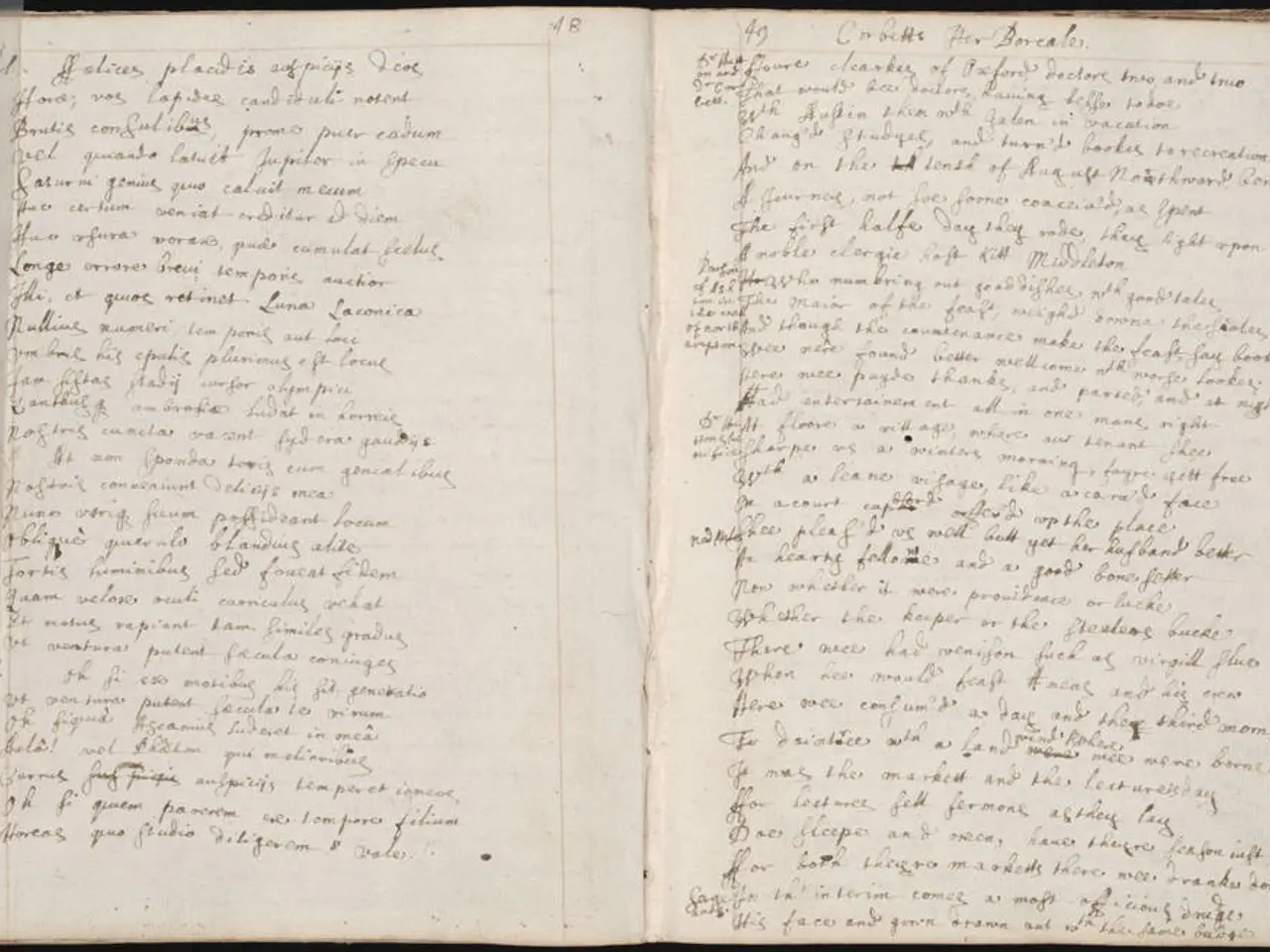Enhance Your Narrative Ability with These 10 Immediate Writing Practices for Better Tale Telling
=============================================================
Storytelling is a skill that can be honed and improved through practice, and there are numerous writing exercises that can help transform your writing. In this article, we will explore some of these exercises that focus on character development, immersive worldbuilding, and refining narrative voice.
The "Rewrite a Scene with a Twist" Exercise is a powerful tool that helps subvert expectations in storytelling. By adding a twist to a familiar scene, you can deepen character development and add complexity to your storytelling. For example, instead of a joyful marriage proposal, what if the person proposing is doing it for a bet?
Another exercise that can help create concise and impactful stories is the "Flash Fiction" Exercise. This exercise challenges you to write a complete story in 1000 words or less, forcing you to be precise and to the point. It's a great way to practice writing concisely and to ensure that every word counts.
The "Write Every Day for a Week" Challenge is a simple yet effective exercise that helps improve writing skills. By committing to write every day for a week, regardless of the quality of the writing, you can develop a consistent writing habit and see your skills improve over time. Consistency is key to improving in this challenge.
The "Kill Your Darlings" Exercise is a useful tool for cutting unnecessary elements from your writing. By removing parts that don't serve the story, even if they are particularly well-written, you can make your writing leaner and more effective.
To create rich and complex characters, you can try the "Character Backstory in One Paragraph" Exercise. This exercise challenges you to define a character's past concisely, focusing on the defining moment that shaped them.
For worldbuilding and immersive setting, the Snowflake Method is a popular approach. This method involves planning your world incrementally, starting with a simple idea and “fanning out” details about the setting and environment to build richness naturally.
In terms of refining narrative voice, free-writing sessions focused on voice and perspective can be very helpful. Organizing notes around characters, setting, and plot can help you spot your unique style and improve clarity. Studying and mimicking effective opening sentences and using narrative distance tools like color-coded POV maps can also help you better control voice and perspective in your scenes.
By combining these approaches—workbooks, free-writing, focused POV choices, and studying masterful examples—you can systematically develop exercises to hone character development, immersive worldbuilding, and distinctive narrative voice in your writing.
Other resources for finding exercises and guidance include Reedsy’s writing resources, The Novelry, and books like Save the Cat Writes a Novel. These resources offer exercises on character and plot development, structured classes focused on editing, voice, perspective, and scene structuring, and practical strategies to enhance storytelling craft.
By incorporating these exercises into your writing routine, you can take your storytelling skills to the next level and create compelling, engaging, and memorable stories.
'Embracing online-education platforms can provide numerous opportunities for continuous learning and education-and-self-development in the realm of storytelling. These platforms offer a plethora of writing workshops and exercises designed to enhance narrative voice, character development, and immersive worldbuilding.'
'To foster lifelong-learning and improve writing abilities, one could incorporate exercises like the 'Rewrite a Scene with a Twist', 'Flash Fiction', 'Write Every Day for a Week', 'Kill Your Darlings', 'Character Backstory in One Paragraph', and the Snowflake Method into a daily routine, supplemented with resources from Reedsy’s writing resources, The Novelry, and Save the Cat Writes a Novel.'




